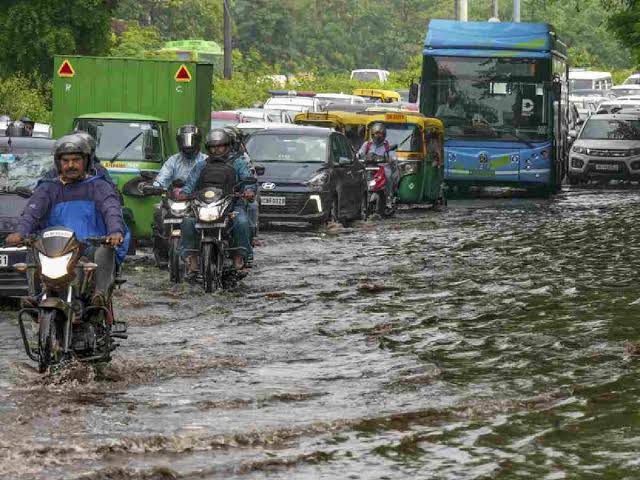 Image Source: The Patriot
Image Source: The Patriot
Today, Delhi experienced a paralyzing spell of rainfall that dramatically exposed the city’s infrastructure flaws and reignited a contentious debate: Why should commuters pay tolls when the roads themselves collapse under adverse weather? The deluge brought much-needed respite from the summer heat but quickly turned the capital into a maze of jams, flooded streets, and mounting public frustration. Here’s a comprehensive real-time newsletter capturing all the live developments and heated reactions across Delhi.
Key Highlights of the Rain Fury
-
Delhi witnessed intense rain episodes accompanied by severe waterlogging and traffic breakdowns, especially in core commercial zones like Dhaula Kuan, Naraina, Patel Nagar, Vijay Chowk, Jangpura, Rohini, and Sansad Marg.
-
The sudden cloudburst on August 17 and continuing showers through August 18 saw arterial roads submerged and vehicles stranded for hours, while commuters voiced outrage at having to pay mandatory tolls on dysfunctional routes.
-
The flood threat intensified as the Yamuna River breached the danger mark, with government advisories warning of further rises and potential evacuations in low-lying floodplain areas.
Weather Conditions and Rainfall Patterns
Scattered rainfall and a developing western disturbance led to alternating spells of drizzle and intense showers across Delhi-NCR, while the maximum and minimum temperatures hovered around 34°C and 25°C respectively.
The India Meteorological Department’s (IMD) forecast for August 18 includes additional light rains and thundershowers during morning/forenoon and evening/night, with humidity staying high.
Impact on City Life
-
Traffic Woes and Waterlogging: Major roads were gridlocked for hours; bottlenecks compelled exhausted commuters to demand accountability and question the logic of toll charges for routes that turned into rivers.
-
Key localities—Vijay Chowk, Jangpura, Rohini—saw buses, cars, and two-wheelers stalled amid knee-deep water.
-
Emergency services, including mobile pump deployments and enhanced drain cleanings by public agencies, struggled to restore normalcy as frustrated motorists waited for relief.
Air Quality Improvements
Amid the chaos, rainfall swept Delhi’s Air Quality Index (AQI) into the 'satisfactory' bracket, registering 91 by 4 pm on Sunday—one silver lining for residents enduring long commutes and urban flooding.
Flood Alert and Evacuation Plans
-
Yamuna river’s water level reached 205.36m by 2pm (danger mark: 205.33m) and rose to 205.55m by 6pm, triggering alerts from disaster management authorities.
-
Delhi’s Chief Minister, along with public works and municipal teams, surveyed flood-prone zones and implemented emergency protocols, including possible evacuation if waters rise to 206m.
-
Residents of low-lying areas have been advised to move to safer ground, and equipment for rescue and relief has been confirmed ready for deployment.
Commuter Sentiment and Toll Debate
-
Rainfall-induced chaos fueled outrage on social media and commuter forums, with citizens demanding toll waivers or reforms, arguing that infrastructure upgrades—not toll fees—should be prioritized.
-
Civic groups and local politicians have echoed calls for public accountability, questioning the justification for toll collections during abysmal road conditions and chronic service failure.
-
No official announcement of toll waivers was confirmed as of publication time, but the intensity of public anger signals possible future debates on this issue.
What’s Next?
-
IMD warns of continued rainfall due to the western disturbance over the next few days.
-
Disaster authorities and district officials remain on high alert for additional flooding and traffic disruptions.
-
The flood situation and commuter grievances are expected to feature prominently in city discussions and policy reviews in the coming week.
Source: ABP Live, Babushahi, Hindustan Times, Indian Express.
Advertisement
Advertisement




